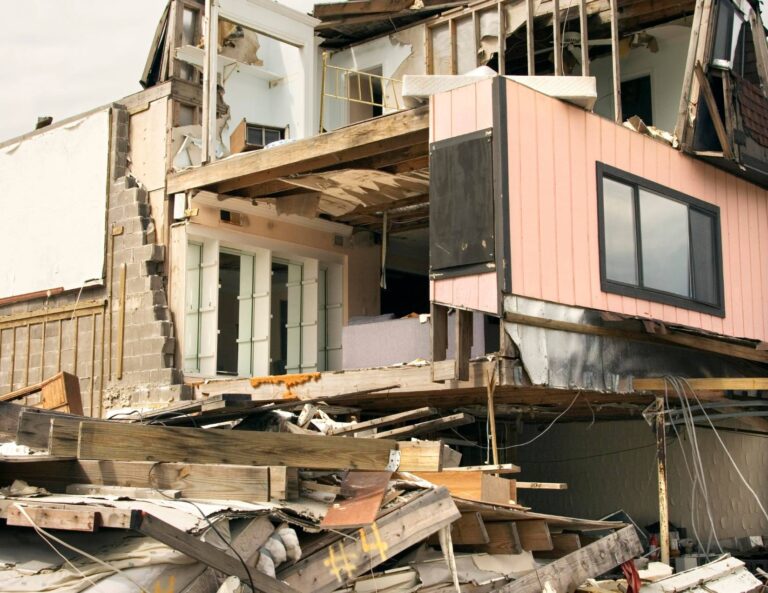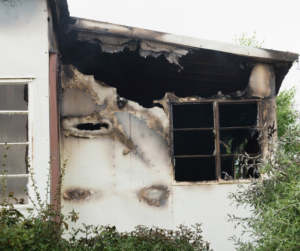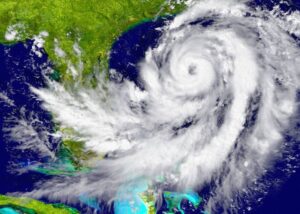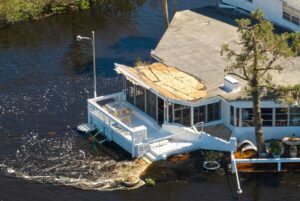As mentioned in our last article, Understanding Florida Hurricanes and Tornadoes, the damage from each of these weather events is similar, including flying debris, structural damage to buildings, uprooted trees and so on. However, the damage from a hurricane will be widespread, whereas the damage from a tornado will be limited to the tornado’s path. In this article, we go into greater detail on the types of damage each of these storms bring about, and how emergency mitigation professionals, such as Florida Gulf Mitigation, can help in the aftermath of either of these events.
Categories of Hurricanes and Tornadoes and Corresponding Damage
A hurricane is a tropical storm with straight-line winds of 74 mph or greater. It has a low-pressure center that generates wind and rain. On the other hand, a tornado is a column of strong rotating wind, blowing at 100 to 300 mph. Tornadoes also have a low pressure center, just like a hurricane, however it is much narrower, with a width of about 300-500 yards. A tornado will travel up to 50 miles before dissolving, moving across land at a speed between 10 to 50 mph. Each has a unique rating system to rank the severity of the storm. Hurricanes use the SaffirSimpson Hurricane Wind Scale which assigns a category from 1 to 5 depending on the sustained speed of the wind.Tornadoes use the Enhanced Fujita Scale (EF Scale). While wind is the major event, each of these storms have secondary events such as flooding that can be just as destructive and dangerous.
Hurricane Damage
A Category 3 hurricane or higher is considered to be a major hurricane that can cause catastrophic damage, flattening whole neighborhoods. But that’s not to say that lesser categories are benign; while the winds may be less, they can still cause significant damage to buildings and trees and the same level of flooding as a higher category hurricane.
Category 1 Hurricane:
- Winds of 74 to 95 mph
- Some damage to roofs, shingles, siding and gutters.
- Tree branches could break and some may be uprooted.
- Damage to power lines and poles causing power outages lasting a few days
Category 2 Hurricane:
- Winds of 96 to 110 mph
- Major damage to roofs and siding
- Uprooted trees, possibly blocking roads
- Power outages lasting several days to weeks
Category 3 Hurricane:
- Winds of 111 to 129 mph
- Major damage to building, removal of roof decking and gable ends
- Many trees uprooted blocking roads
- Electricity and water unavailable for several days to weeks
Category 4 Hurricane:
- Winds of 130 to 156 mph
- Severe building damage with destruction to roof and exterior walls
- Many uprooted trees block access to neighborhoods
- Power outages could last weeks to months
- Area will be uninhabitable for weeks to months
Category 5 Hurricane:
- Winds of 157 or higher
- High number of flattened buildings
- Many uprooted trees will isolate residential areas
- Power outages could las weeks to months
- Area will be uninhabitable for weeks to months
Tornado Damage
The EF Scale uses Damage Indicators (DIs) combined with Degrees of Damage (DoDs) to categorize the damage that is observed in the aftermath of a tornado. This is then linked to a wind speed that is deemed likely to have caused that amount of damage, allowing an EF rating to be assigned.
EF0
- Wind speed of 63 to 97 mph
- There is a loss of roof covering of less than 20%
EF1
- Wind speed of 79 to 116 mph
- There is broken glass from the doors and windows
- The roof deck has been lifted and there is a loss of roof covering greater than 20%
- Chimneys and garage doors have collapsed
EF2
- Wind speed of 103 to 142 mph
- The entire house has moved off its foundations
- Large parts of the roof are gone, while the walls remain standing
EF3
- Wind speed of 127 to 178 mph
- Most walls have collapsed except for some interior walls
EF4
- Wind speed of 142 to 198 mph
- All walls have collapsed
EF5
- Wind speed of 165 to 220 mph
- There’s nothing left of the well-constructed home, just a swept-clean slab.
How An Emergency Mitigation Company Helps in the Aftermath of a Hurricane or Tornado
As you can see, a major storm such as a hurricane or a tornado, can be devastating with power and water outages that can last months, flooding, complete devastation of property and the isolation of residential areas. Such devastation can spawn other problems as well, such as contaminated water, disease and even the risk of displaced dangerous animals. Right after a storm it is important that you put your own safety first and secure the area if it is not too risky.
If there is extensive structural damage, it is best to call professionals to secure the building and property area and protect it from further damage from the environment or from vandals. This may also include removing any water and dehumidifying the interior to block the growth of mold.
Another important job of a professional emergency mitigation/property restoration company is to assess and document the damage. Detailed and accurate documentation is critical to create a plan for reconstruction as well as for insurance purposes.
Once these immediate tasks are completed, emergency mitigation can turn to property restoration or in severe cases, demolition and rebuilding. Here at Florida Gulf Mitigation we provide a full sweep of services from securing a damaged property right through to its restoration or reconstruction.
Florida Gulf Mitigation: Expertise From Initial Assessment to Rebuild
Restoration/rebuilding, has many moving parts and requires a high level of expertise to not only assess the condition of the property and the viability of restoration but to actually perform the work. Working with one company through the whole process provides continuity and a peace of mind that is priceless when you’ve already lost so much. Our aim at Florida Gulf Mitigation is to get you back in your home, and back to your life as quickly as possible! Give us a call if you need help dealing with storm damage.







Give us a follow!